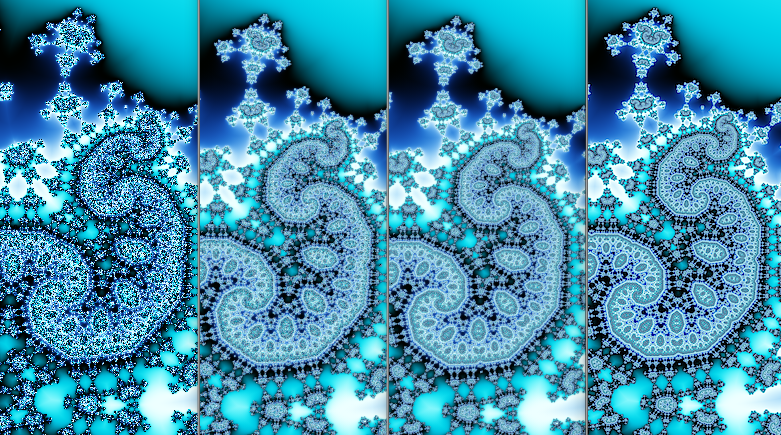
Such effects are most desirable in many analytical applications, such as in high-sensitivity surface assays, in which signal intensity and photostability are paramount concerns. 3, top), which suggests that ICG will display higher intensities for longer times when bound to fractal silver electrodes. Intuitively, the ICG intensity remains higher after the initial decrease in intensity ( Fig.

Given that the detectable signal from the ICG– HSA is given by the area under these photobleaching curves, then substantially more emission can be obtained from the roughened electrodes as compared with the control sample. Interestingly, if the illumination intensity is adjusted so that both samples yield the same steady-state intensity at the onset of illumination, then the ICG–HSA on the fractal-like silver cathode photobleaches at a much slower rate ( Fig. However, the effect is small and the rates become comparable after ≈2 min.

At the onset of illumination, the relative intensity of ICG-HSA decays more rapidly on the fractal structure than on the control sample ( Fig.

It should be noted that the normal fluorescence emission maximum (H 2O, pH 7) of 810 nm is shifted in this regard because of the choice of filters than were required to discriminate against a highly scattering surface.įigure 3 shows the enhanced photostability of ICG on the roughened silver cathode. An increase in fluorescence intensity coupled with a reduction in lifetime can only be explained by an increase in the radiative decay rate:įluorescence intensity of ICG–HSA-coated roughened silver electrodes and an unused silver electrode, Ag, Ex = 760 nm. The remarkable increase in fluorescence intensity, ≈100-fold, was also accompanied by a significantly reduced ICG lifetime, reduced >100-fold. Figure 2 shows the fluorescence intensity of ICG–HSA-coated roughened electrodes. As a control sample, an unused electrode was also coated with ICG–HSA. We incubated the electrode in 30 mM ICG, 60 mM HSA for 24 hr, then rinsied it with water to remove the unbound material. We typically observed the growth of the fractal-like structures on the silver cathode electrode ( Fig. Ī constant current was passed between two silver electrodes separated by 10 mm in pure water ( Fig. We therefore reasoned that a monolayer protein spacer (≈4 nm) would provide for the through-space distance requirement of metal-enhanced fluorescence. Although the large increases in Raman signals observed with roughened silver electrodes are thought to be due to surface-contact interactions, we questioned their use in metal-enhanced fluorescence, given that metal-enhanced fluorescence is thought to be a through-space phenomenon. Roughened silver electrodes are widely used for surface-enhanced Raman scattering (SERS). These exciting results are explained by the metallic surfaces modifying the radiative decay rate, G, of the fluorescent labels. Our results show that we can detect a 160-fold increase in the number of detectable photons from the labeled protein, prior to photobleaching. In addition, dramatically decreased lifetimes and significantly increased photostabilities of the fluorescent labels were observed. Remarkable increases in fluorescence intensities were observed, typically 500-fold on the glass–silver fractal substrate and some 100-fold on the roughened silver electrodes, as compared with a control with the same substrates but with no fractal structures.

(HSA) protein that had been labeled with two fluorescent probes, indocyanine green (ICG) and fluorescein (FITC), respectively. These structures were coated with a monolayer of human serum albumin. Silver fractal-like structures have been grown on both silver electrodes and on glass slides. We believe that this new silver-surface preparation, which results in ultrabright and photostable fluorophores, offers a new generic technology platform for increased fluorescence signal levels, with widespread potential applications to the analytical sciences, imaging, and medical diagnostics. These results further serve to complement our recent work on the effects of nobel metal particles with fluorophores, a relatively new phenomenon we have termed both metal-enhanced fluorescence and radiative decay engineering. Five-hundred-fold enhanced fluorescence emission from fluorophore-protein coated silver fractal-like structures has been observed.


 0 kommentar(er)
0 kommentar(er)
